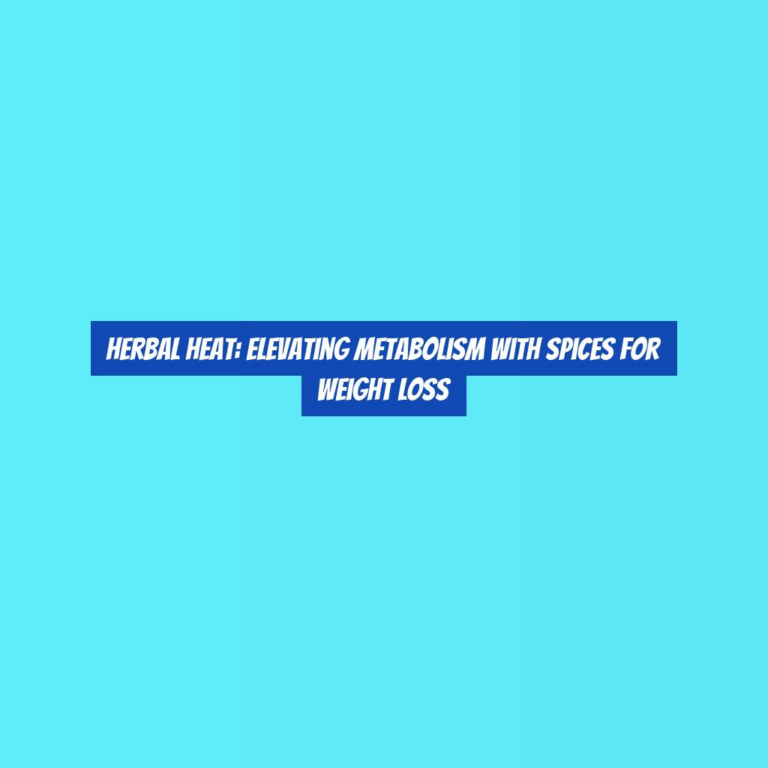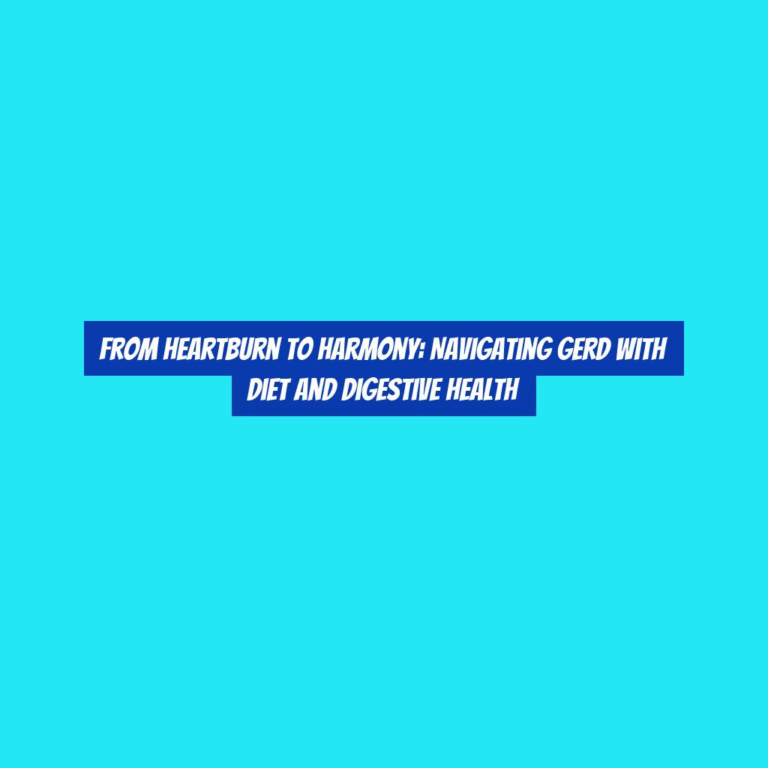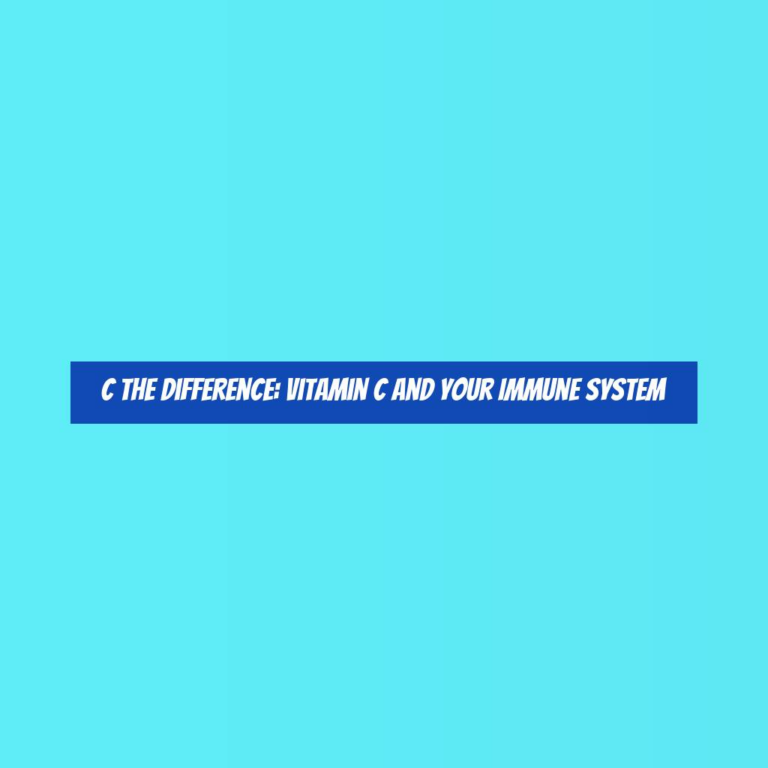Inside Out: Exploring the Journey of Nutrient Absorption in Your Body
You are what you eat, or so the saying goes. But have you ever wondered about the intricate process your body goes through to extract and utilize the essential nutrients from the food you consume?
From the moment you take a bite to the final stages of waste elimination, your body undergoes a complex journey of nutrient absorption that is vital for sustaining life. Understanding this process could shed light on how to optimize your diet for better health and well-being.
Digestive System: Breaking Down Food
When you eat food, your digestive system begins the process of breaking it down into smaller components that your body can absorb and use for energy and nutrition. The moment food enters your mouth, enzymes in your saliva start the breakdown of carbohydrates. As you swallow, the food travels down your esophagus and into your stomach. Here, the food encounters stomach acid and digestive enzymes that further break it down into a soupy mixture called chyme.
Next, the chyme moves into your small intestine, where the majority of nutrient absorption occurs. The pancreas releases digestive enzymes to continue breaking down carbohydrates, proteins, and fats, while the liver produces bile to aid in fat digestion. The walls of the small intestine are lined with tiny, finger-like projections called villi, which increase the surface area for nutrient absorption.
Nutrients such as sugars, amino acids, fatty acids, vitamins, and minerals are then absorbed into the bloodstream and transported to various cells throughout your body.
Absorption in the Small Intestine
As your food transitions from the stomach to the small intestine, the process of nutrient absorption takes center stage, with the small intestine playing a crucial role in this vital function. Once in the small intestine, the nutrients from your food are broken down further and absorbed into the bloodstream to be utilized by your body.
The inner lining of the small intestine is covered in tiny, finger-like projections called villi, which increase the surface area available for absorption. These villi are covered in even smaller microvilli, further enhancing the absorptive surface area. This intricate system allows for efficient absorption of nutrients such as carbohydrates, proteins, fats, vitamins, and minerals.
The absorbed nutrients are then transported via the bloodstream to various cells and tissues throughout your body to support essential functions such as growth, repair, and energy production. The small intestineG??s remarkable ability to absorb nutrients is a crucial step in the journey of nutrient absorption within your body, ensuring that you receive the essential components necessary for overall health and well-being.
Transporting Nutrients to the Bloodstream
After absorption in the small intestine, the absorbed nutrients are transported to the bloodstream, where they can be distributed to various cells and tissues throughout your body. Once the nutrients are absorbed by the cells lining the small intestine, they enter the bloodstream through a process called transport. This transport occurs through two primary methods: passive diffusion and facilitated diffusion.
Passive diffusion allows certain nutrients, like water and small lipids, to move across the cell membrane and into the bloodstream without the need for energy. On the other hand, facilitated diffusion utilizes specific carrier proteins to transport larger molecules, such as glucose and amino acids, into the bloodstream. These carrier proteins bind to the nutrients and help them move across the cell membrane.
Once in the bloodstream, the nutrients are carried to various tissues and organs where theyG??re needed for energy production, growth, repair, and overall functioning of the body. The bloodstream acts as a distribution network, ensuring that the absorbed nutrients reach their intended destinations to support your bodyG??s essential functions.
Utilizing Nutrients at the Cellular Level
Once the nutrients are transported to the bloodstream, your cells utilize them at the cellular level to support various essential functions such as energy production, growth, and repair. At this level, the intricate processes that take place within your cells are crucial for maintaining overall health and well-being.
HereG??s a closer look at how your cells make use of the nutrients:
-
Energy Production: Mitochondria, known as the powerhouse of the cell, use nutrients such as glucose and fatty acids to generate ATP, the energy currency of the cell.
-
Cell Growth: Nutrients like amino acids are utilized for the synthesis of proteins, which are essential for cell growth and repair. Additionally, nucleotides derived from nutrients play a vital role in DNA replication and cell division.
-
Cellular Repair: Various nutrients act as cofactors and substrates for enzymatic reactions involved in the repair and maintenance of cellular components. For example, vitamins and minerals play key roles in supporting immune function and tissue repair.
Understanding how nutrients are harnessed at the cellular level provides insight into the intricate mechanisms that enable your body to function optimally.
Waste Management and Elimination
Upon receiving nutrients, your body efficiently manages waste and eliminates byproducts to maintain optimal cellular function and overall health. The process begins in the digestive system, where waste products are formed as a result of nutrient breakdown. These waste products, including fiber, undigested food, and dead cells, are then transported to the large intestine. Here, water and electrolytes are reabsorbed, while the remaining waste forms feces, which are eventually eliminated through the rectum.
In addition to the digestive system, the kidneys play a crucial role in waste management. They filter waste products, excess ions, and water from the blood to produce urine, which is then excreted from the body. This process helps regulate the bodyG??s fluid balance and eliminate potentially harmful substances.
Furthermore, the liver contributes to waste management by processing and detoxifying various substances, such as drugs and alcohol, before theyG??re excreted from the body. This vital organ also plays a key role in breaking down old or damaged red blood cells and converting the byproducts into bile, which is then released into the digestive system to aid in the breakdown of fats.
Conclusion
So, thatG??s the journey of nutrient absorption in your body.
From breaking down food in the digestive system, to absorbing nutrients in the small intestine, transporting them to the bloodstream, and finally utilizing them at the cellular level.
Your body is an incredible machine, efficiently managing waste and eliminating what it doesnG??t need.
ItG??s important to fuel your body with the right nutrients to keep this process running smoothly and keep you healthy.





